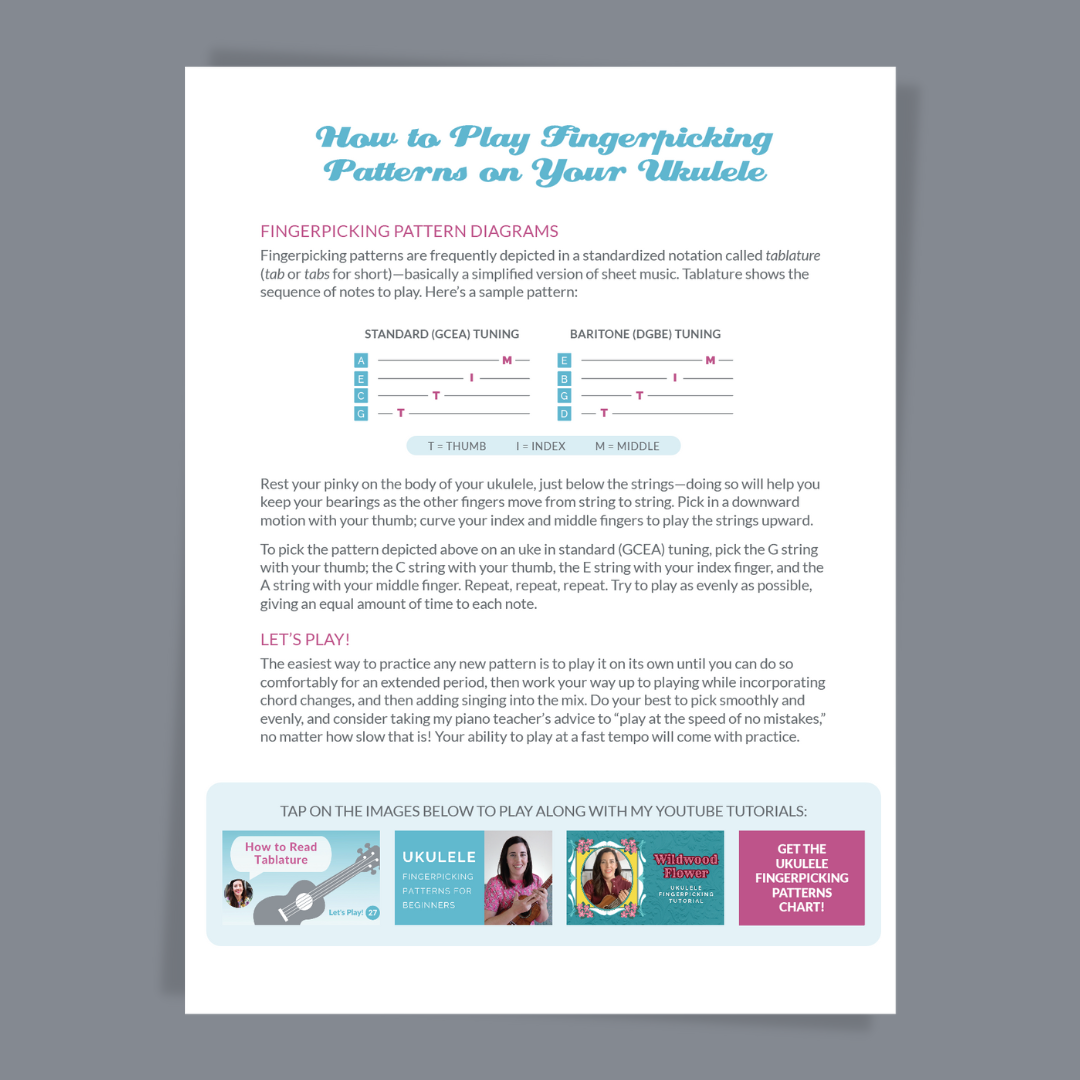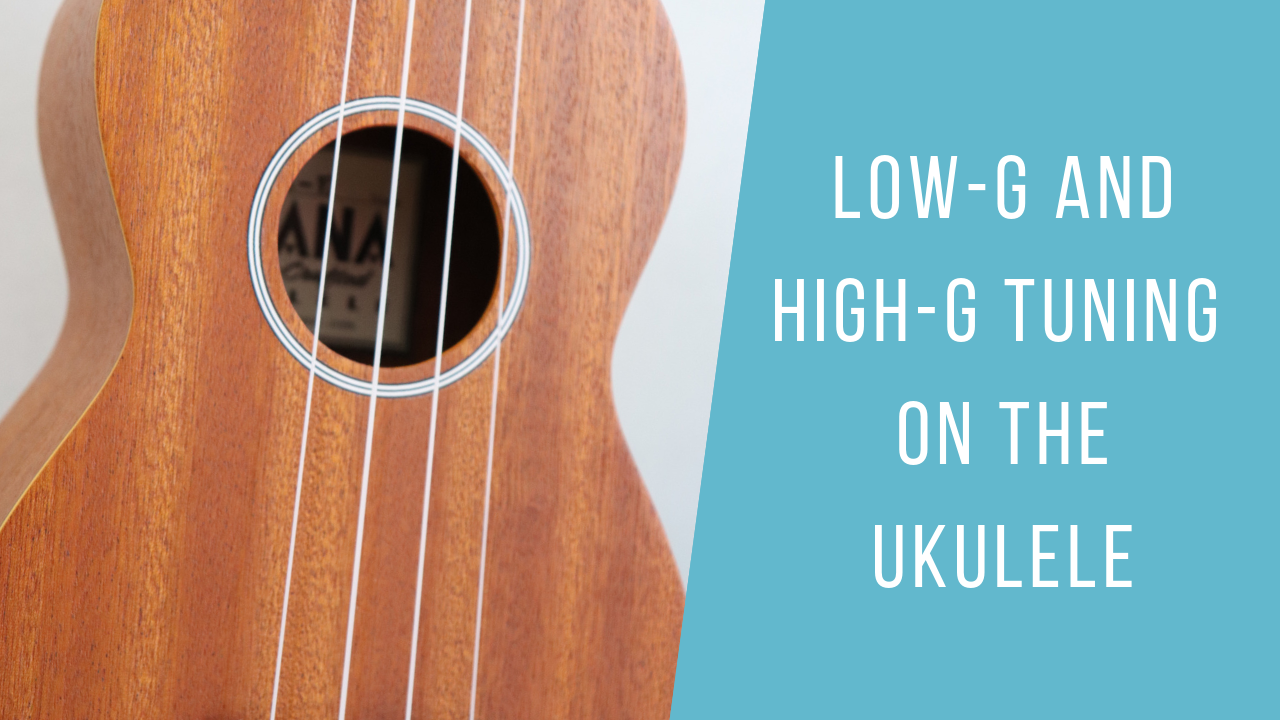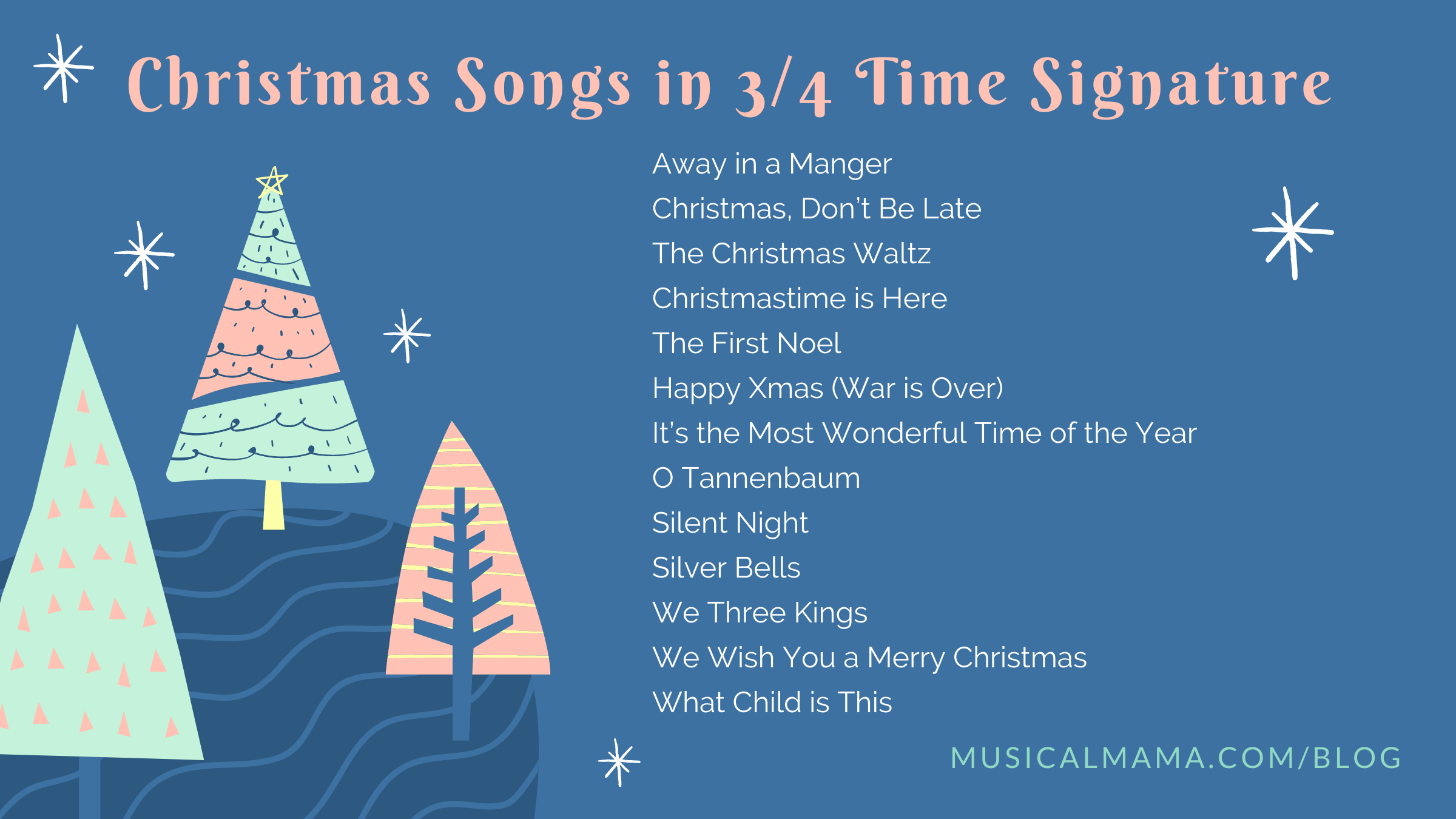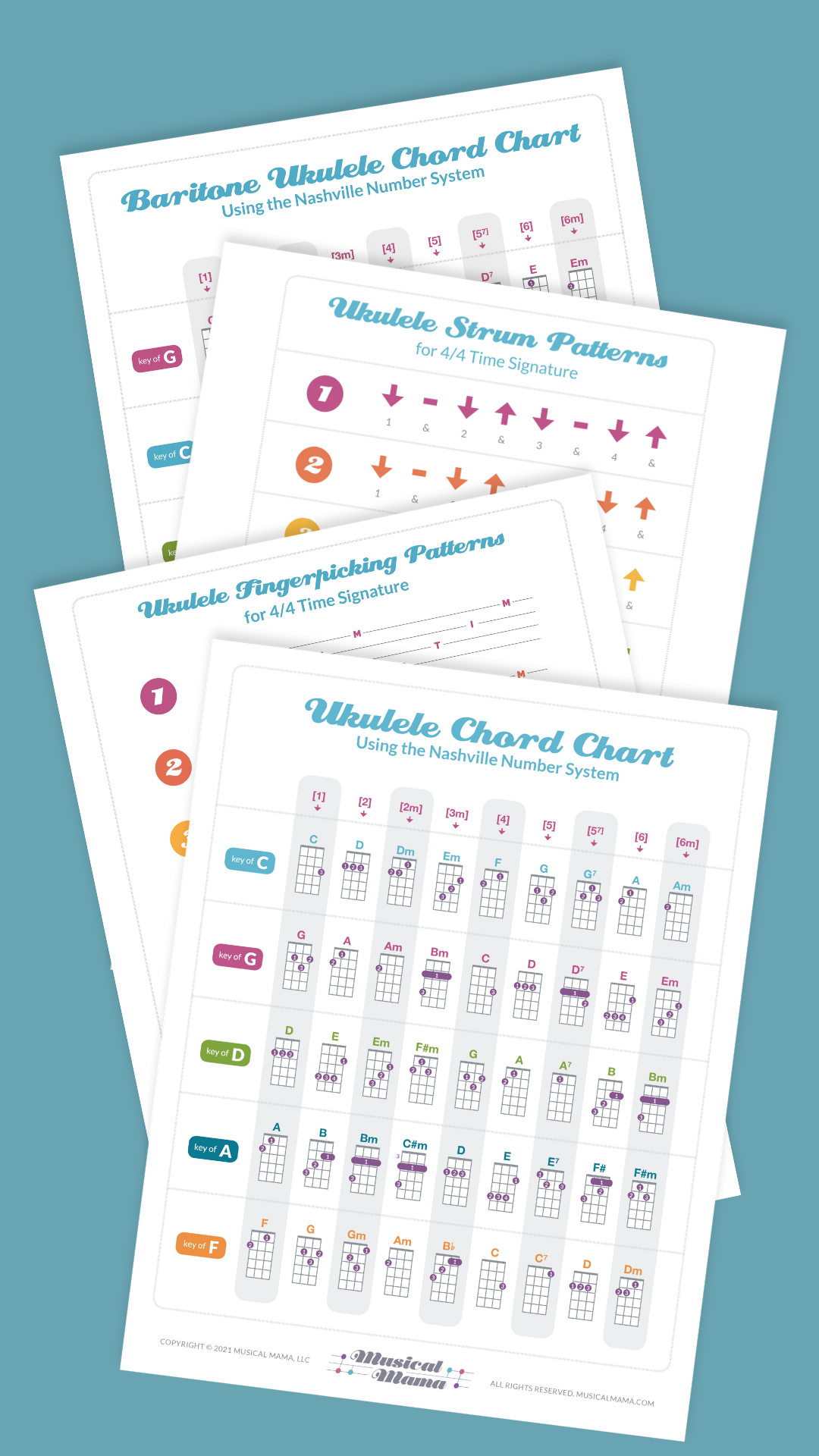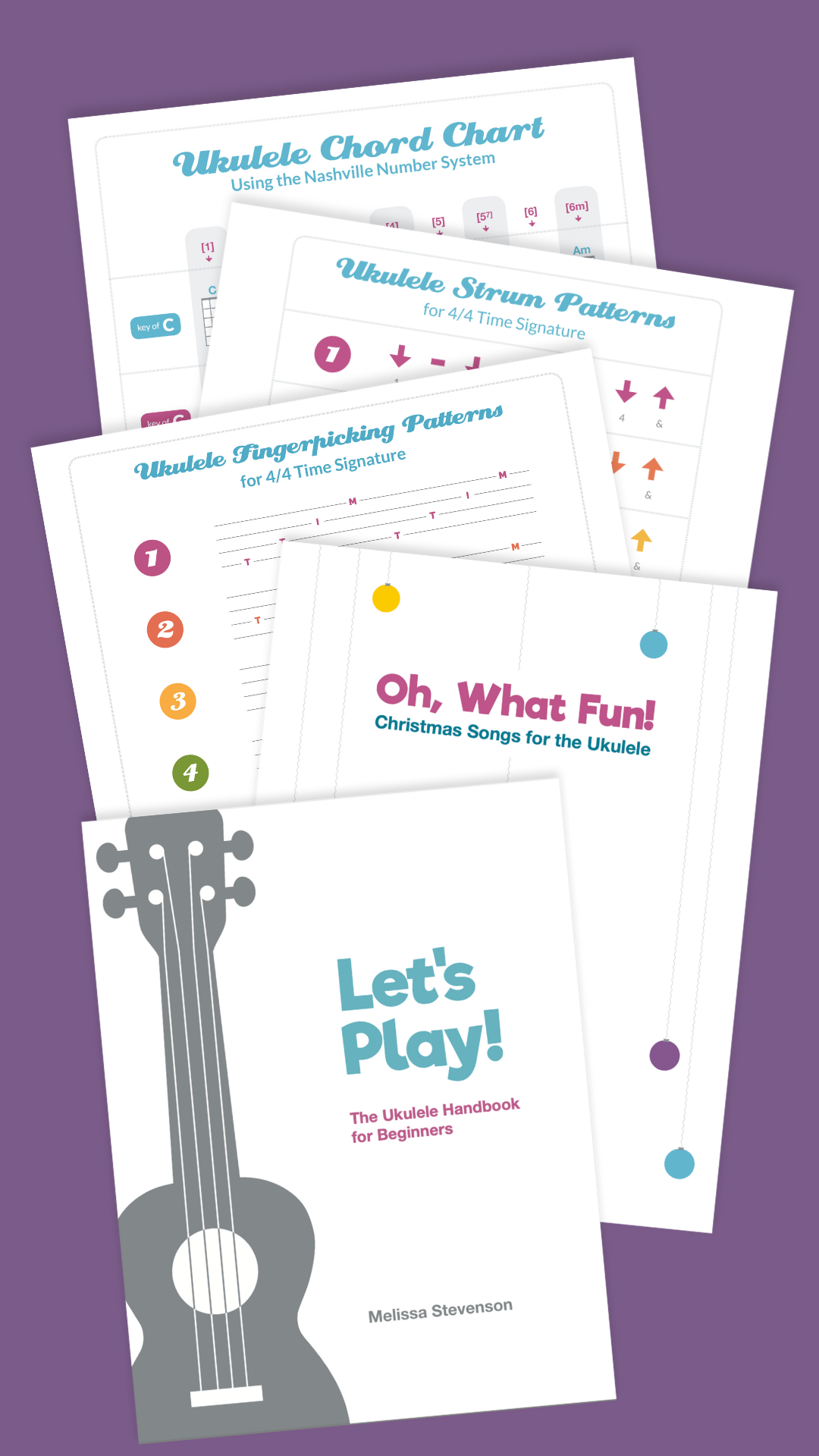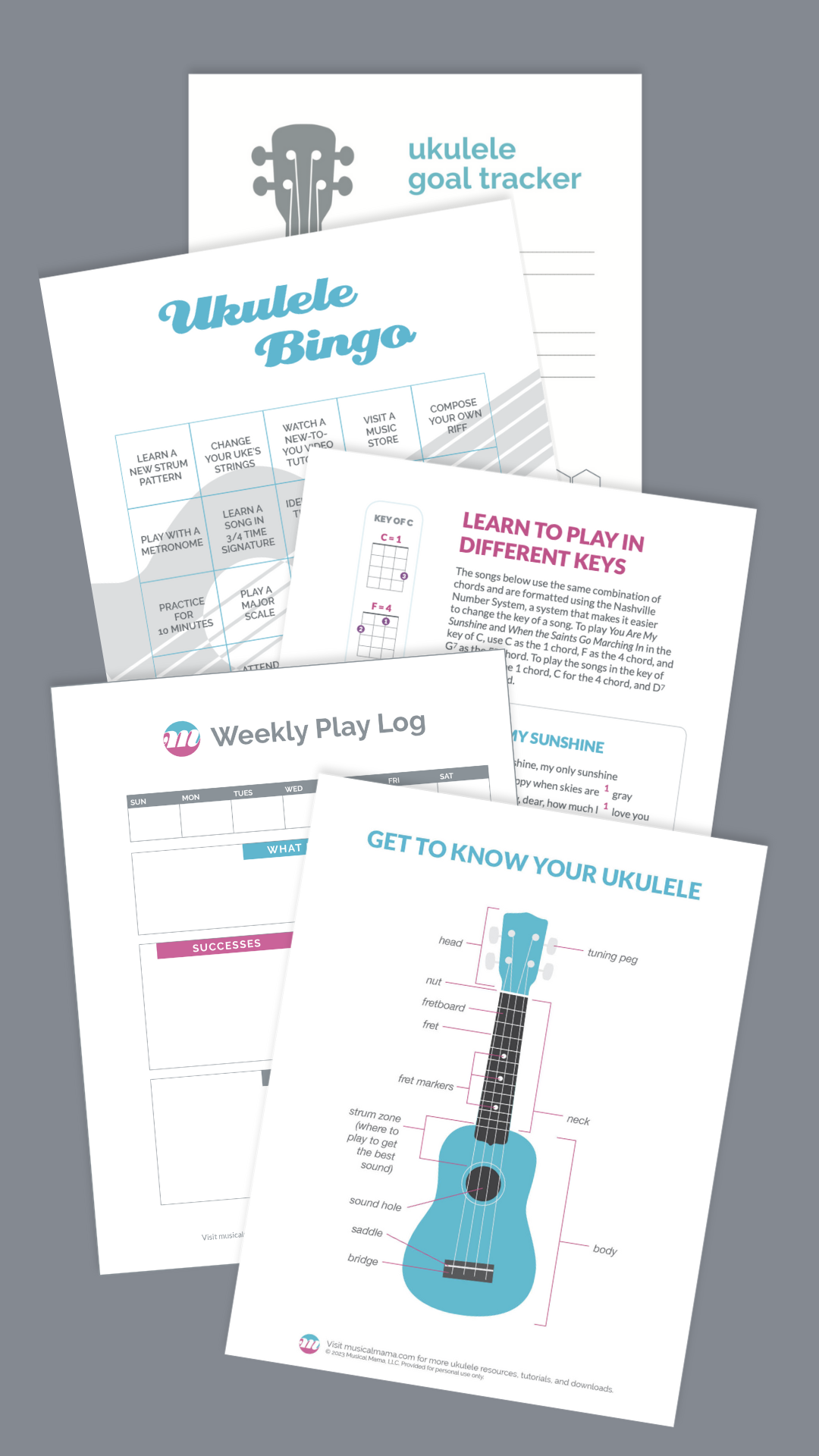Trouble in Mind is a beautiful blues song that’s excellent for helping us develop our singing and strumming skills. In this tutorial, I play my baritone ukulele in the key of G, using just the G, C, and D7 chords, but you can use my chord charts (available for standard and baritone tuning) to easily find the chords for the eight-bar blues in five different keys!
Read MoreMaking Sense of 12/8 Time Signature (with Video Tutorial) - Music Theory Made Easy
For this third installment in my series on time signature, I break down what 12/8 time signature feels like for those of us who don't have degrees in advanced music theory! Learn technical terms like "dreamy" and "swishy" and learn how to spot 12/8 time by singing through two great examples of it—"Perfect" by Ed Sheeran and "O, Holy Night" by Mariah Carey.
Read More"Come All Ye Fair and Tender Ladies," a Beautiful Three-Chord Song for the Ukulele
"Come All Ye Fair and Tender Ladies" is a beautiful ballad that's great for helping us build up our strumming endurance. For this tutorial, I share six of my favorite verses and a strum that pairs very nicely with ballads like this one. If the key of G isn’t a great fit for your vocal range, use my chord chart to easily change the key to one that is. And just for fun, here's a bonus verse that I will often sing in place of verses four and five.
Bonus Verse
I wish I (G) was on some tall mountain
Where the ivy rocks are black as (D) ink
I'd write a (Am) letter to my lost true (G) lover
Whose cheeks are (Am) like the morning (D) pink
DOWNLOAD THE PDF FOR FREE WHEN YOU SIGN-UP FOR MY NEWSLETTER!
Want to hear what the more Irish version sounds like? Check out this beautiful rendition by Lumiere.
One more thing: folk songs are not precious or sacred. If there’s something you don’t like about this song (or any other folk song), change it! To modify and re-mix elements of folk songs is to participate in a grand tradition of music-makers that dates back centuries. Listen to different artists singing this song and see if there are any other verses you'd like to include! Or, of course, you could contribute your own verses or use this song as inspiration for your own melody. Dolly Parton’s “Little Sparrow” is a great example of how to use a traditional folk song to create something new.
You May Also Like
"I've Got the Joy" and "In My Family's House" — Two Easy Songs You Can Play with Your Kids
Today I have a very easy song to share with you! It uses only two chords, it’s really short, and it has very simple lyrics. I’ll show you how to play it in two different keys, and then I’ll show you how to turn this into a holiday song so you can sing about your own family traditions.
Read MoreSing and Strum "Joy to the World" in Two Different Keys, A Christmas Ukulele Tutorial
One of the things that appeals to me about Christmas music is that it is, essentially, a type of folk music. Each year we hear many of the same songs, and we often have our own favorite versions of those songs. And of course, new versions of those classic carols and pop songs get recorded every year. Today I'm sharing a song that was written three hundred years ago—it’s sung by artists and choirs around the world, and it’s one you may already know by heart.
Read More"Don't This Road Look Rough and Rocky," An Easy Three-Chord Ballad for Beginning Ukulele
What is it about sad songs that make them so fun to sing? “Don’t This Road Look Rough and Rocky” is a three-chord ballad that packs a lot of melodrama and melancholy into its chorus and three verses, and it was one of the very first songs I memorized the chords and lyrics to.
Read MoreWhat A Pick-up Note Is and What You Need to Know About It (with Video Tutorial)
Often times, we ukulele players start our musical journey by learning how to play a few songs with a basic down-up strum. Then we might learn a more complicated strum pattern only to find we’re having little trouble matching the strum to a song. Often times this is because a song has pickup notes. And the good news is that this is something you can make sense of even if you’ve never had a formal music lesson or learned any music theory before.
Read MoreFeeling the Difference Between 3/4 and 6/8 Time Signature
Way back in 2017, I published a video tutorial to help you feel the difference between 4/4 and 3/4 time signatures, and today’s post will help you feel the difference between 3/4 and 6/8 time signatures.
Read MoreUnderstanding the Difference Between High-G and Low-G Tuning on the Ukulele (with Video!)
A List of Christmas Songs Set in 3/4 Time Signature
If you’re looking up chords and lyrics online, or playing along with YouTube tutorials, you may find that the time signature of a song is not mentioned. If you’re having a hard time figuring it out on your own, check out my Feeling the Difference Between 4/4 and 3/4 Time Signature, which will show you how to feel the difference between the two most popular time signatures. And in my post from yesterday, I included another video tutorial with three beginner strum patterns for playing in 3/4 time (commonly referred to as waltz rhythm).
Read MoreHow to Strum Songs Set in 3/4 Time Signature (With Video Tutorial!)
This post excerpts content from Let’s Play! The Ukulele Handbook for Beginners.
Let’s begin by defining some basic music terms:
Time Signature
A symbol used in sheet music to indicate the number of beats per measure of music. A song’s time signature determines which strum patterns you can play.
Measure
One unit of music; one grouping of beats
4/4 Time Signature
The most common time signature for Western music. A song in 4/4 time has four beats per measure and is counted 1 - 2 - 3 - 4, 1 - 2 - 3 - 4 . . . 4/4 (“four-four”) time is also referred to as common time because it is the default time signature for pop, rock, R&B, hip-hop, country, folk, etc. 4/4 time is the time signature you are most accustomed to hearing and, as a beginning musician, it’s the time signature you are most likely to be playing.
3/4 Time Signature
The second most common time signature for Western music. A song in 3/4 time has three beats per measure and is counted 1 - 2 - 3, 1 - 2 - 3 . . . 3/4 (“three-four”) time signature is the second most popular time signature for Western music and is frequently referred to as waltz rhythm. When we play in 3/4 time, we count in groups of three (not four), meaning we must alter our strum to suit the rhythm.
In the following video, I play through three beginner waltz strums:
Your primary goal in making music is to maintain a steady beat. Start with variation A to create a nice, basic rhythm as you familiarize yourself with the new count. When you’re keeping a steady beat and appropriately managing your chord changes, give variations B and C a try.
One of my favorite things to do is simplify music theory to make it easier to understand, and I hope this post has helped simplify time signatures for some of you! If you’d like to learn more, check out my book, Let’s Play! The Ukulele Handbook for Beginners. Happy strumming!
Feeling the Difference Between 4/4 and 3/4 Time Signatures
Unless you're a regular reader of sheet music, you probably don't spend too much time thinking about time signature! But time signature is an important piece of information that tells you about the rhythm of the song you're trying to play, and it dictates the count of your strum.
4/4 time: A song in 4/4 time has four beats per measure and is counted 1, 2, 3, 4, 1, 2, 3, 4, and so on. 4/4 time is also called “common time” because it is the most common time signature for pop, rock, R&B, folk, etc.
3/4 time: A song in 3/4 time has three beats per measure and is counted 1, 2, 3, 1, 2, 3, and so on. This time signature is also quite common and is often referred to as waltz rhythm.
In my beginner's ukulele course, we learn strums for playing in both of these time signatures. Beginners occasionally get confused about the difference between the two, so I've created a video to help with that!
Note: If you're clapping along to a fast-paced song, you'll no doubt have to increase the speed of your claps! If you're clapping to a slower song, you'll be paced similarly to the examples in the video.
Popular 3/4 Songs:
Oh, My Darling Clementine, Down in the Valley, My Bonnie Lies Over the Ocean, Amazing Grace, Lavender's Blue, Rock a Bye Baby, Little Boxes, and a LOT of Christmas songs are all in 3/4 time. Which one are you most familiar with? Try clapping out the 3/4 pattern as you sing it! Looking for more contemporary tunes to test this out with? Quora has a list of pop songs in 3/4 time. And playlists.net has a playlist of some, too.
Another example of a song in 3/4 that comes to mind (because my kids have been listening to it on repeat!) is "Gaston" from Beauty and the Beast soundtrack. Be prepared to clap quickly with this one, as it's pretty fast-paced!
Popular 4/4 songs:
Almost everything else! I refer to 4/4 time as the default time signature. It's the rhythm most beginning musicians start out playing, and it's the time signature our ears are most accustomed to.
More Unusual Time Signatures:
If you've totally nailed 4/4 and 3/4 rhythms, you may want to familiarize yourself with more complex time signatures. If you have a child who's 5 years or younger, I highly recommend attending a Music Together class! Each song collection includes at least one or two songs in a less common time signature. I've seen songs set in 6/8 (similar to 3/4), 7/8, 5/4, and 12/8. (I'd include links to songs but can't find versions on Apple Music, Spotify, or Youtube).
For more casual listening, Quora has a list of songs set in unusual time signatures.
Feel the Beat!
When you're making music, the absolute number one goal is to keep a steady beat. This is so much easier when you're actually channeling the rhythm of your music through your body. The clapping patterns in the video are a great way to start feeling the beat which, in turn, improves your overall strumming. Plus, it involves no special equipment, and it's something you can easily do when you're hanging with your kiddos!
Do you have a hard time keeping the beat? Or do you naturally have a good sense of rhythm and timing? I'd love to hear from you!
PS: Searching for the Gaston video sent me down a Youtube rabbit hole that uncovered this little gem of Josh Gad, Luke Evans, and Alan Menken singing it live at a Disney event.

